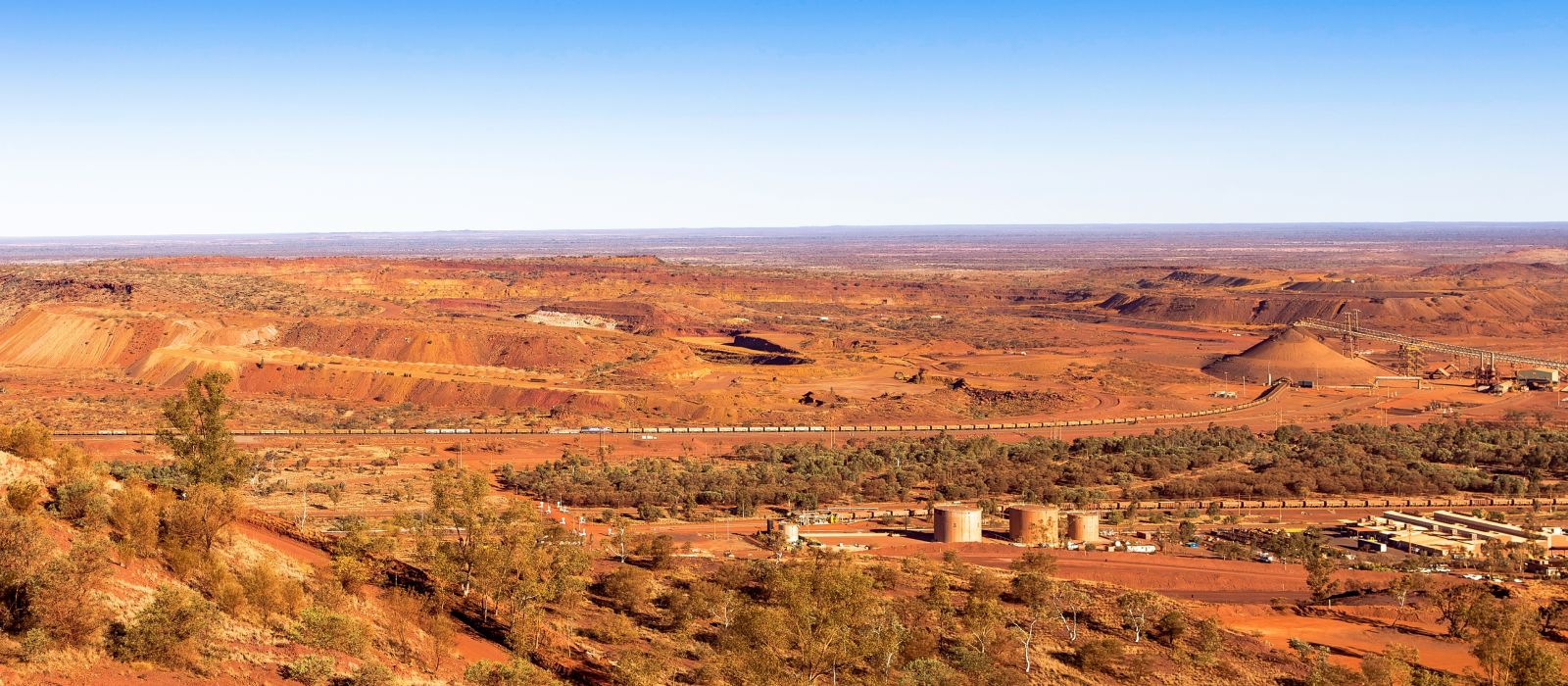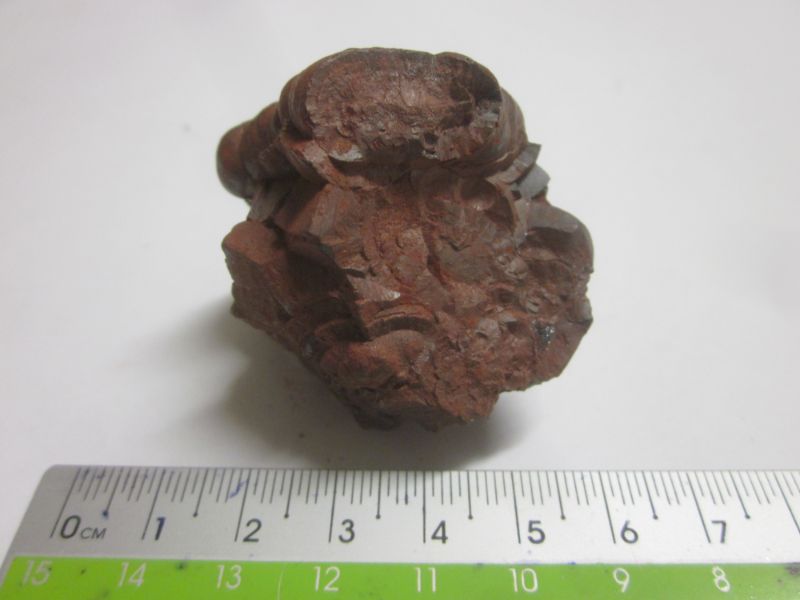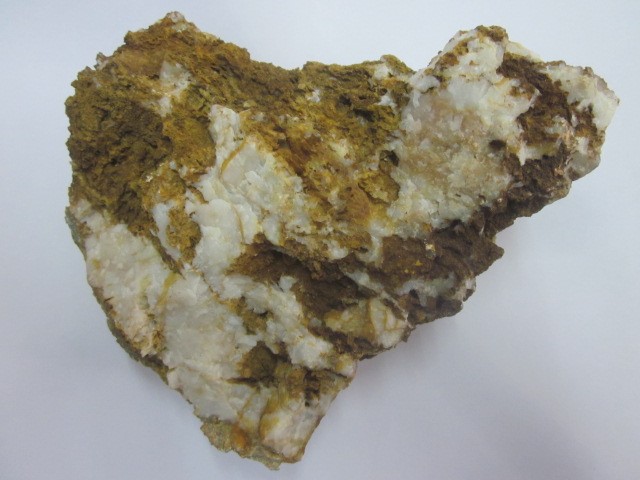Brush up on your ore mineralogy

This article is based on a chapter in AusIMM's Spectrum 26, Practical Ore Mineralogy, published in January this year.
The book aims to assist mineral processing engineers who have received minimal training during their degree in identifying minerals. The content draws on Mike Wort's research over the last 50 years and mineral industry experience from around the world. It includes information from both the fields of mining geology and mineral technology.
1. Iron ores and their constituent minerals
Iron occurs as a formal part of the compositional formula of a large number of minerals. However, comparatively very few minerals have been exploited as a source of iron, and they are shown in Table 1.
|
Mineral |
Formula |
Density |
Mohs hardness |
%Fe |
Crystal System |
Colour/Lustre in hand specimen |
|
Hematite |
Fe2O3 |
5.26 |
5-6 |
69.94 |
Trig |
Black to dark grey or bluish-grey, red-brown on weathered surfaces |
|
Goethite |
Fe2O3.H2O |
4.28 |
5-5.5 |
62.85 |
Orth |
Earthy, brown to yellow |
|
Limonite |
Fe2O3.nH2O |
3.6-4.0 |
3.5 |
40-60 |
Amor |
Yellow to red-brown |
|
Siderite |
FeCO3 |
3.96 |
4 |
48.2 |
Trig |
Grey, brown, green, white, vitreous |
|
Magnetite |
Fe3O4 or Fe2+O.Fe3+2O3 |
5.18 |
3-4.5 |
72.4 |
Cub |
Black, sub-met to met. |
|
Pyrite |
FeS2 |
5.02 |
6-6.5 |
46.55 |
Cub |
Brassy, met. |
Abbreviations: Trig = trigonal, Cub = cubic, Orth = orthorhombic. Met = metallic; sub-met = sub-metallic.
Native or metallic iron is rarely found in rocks but is more common in meteorites. Until we get to conducting mining operations in space, we do not need to consider them further!
Limonite is a reddish-brown to yellow-brown earthy secondary mineral which consists of poorly crystalline or amorphous hydrated iron oxides. It can be exploited commercially if the grade is high enough, but would be third in preference to hematite and magnetite. Limonite is the common form of surface oxide residue, which marks the presence of a sulphide vein below ground. The iron oxides are all that is left of the original iron-bearing sulphide minerals pyrite, chalcopyrite or bornite after they have been oxidised and leached.
This tell-tale crust is known as “gossan” and is a key indicator for prospectors. The micro-textures of the gossan, if subjected to expert examination, can give a good pointer to the identity of the original minerals from which the gossan was formed. Probably Rio Tinto at Huelva in Spain had the first famous gossan, which was mined by the Romans to recover the residual gold and silver long before the pyrite/chalcopyrite ores underneath were mined.
Currently hematite forms the main iron ore deposits of commercial interest especially those of direct shipping grade, with close to 60 per cent Fe but preferably 65 per cent plus. High-grade ore from the Pilbara often looks bluish-grey on freshly broken surfaces, but will yield a red streak. The percentage of impurities is critical and iron ores with little or no impurities are preferred. The chief impurities are SiO2, Al2O3, P, and S which have corresponding typical acceptable limits of about 4 per cent, 2-3 per cent, 0.05 per cent and 0.05 per cent. The exact acceptable limits for premium grade products depend on whether the product is lump, fines or pellets.
The full suite of elements routinely analysed for iron ores includes Na2O, K2O, Mn, Ca, Mg, Ti, V and loss on ignition (LOI). LOI is often measured at three different calcination temperatures, namely 371°C, 650°C, and 1000°C. The first two temperatures are required to respectively drive off hydroxyl groups from gibbsite and kaolinite, and the LOI data can be used diagnostically to identify the source of the Al2O3 contaminant. In Australian iron ores, kaolinite is more common than gibbsite.


2. Impurity minerals in iron ores
|
Mineral |
Formula |
Density |
Mohs hardness |
Crystal System |
Colour/Lustre |
|
Gibbsite |
Al(OH)3 |
2.40 |
2.5-3.5 |
Mon |
Pearly white, greyish, greenish, vitreous |
|
Kaolinite |
Al2Si2O5(OH)4 |
2.62 |
2-2.5 |
Tric |
White, greyish, yellowish, etc |
|
Pyrite |
FeS2 |
5.02 |
6-6.5 |
Cub |
Yellow, brassy, met |
|
Pyrrhotite |
Fe1-xS |
4.6 |
3.5-4.5 |
Mon or Hex |
Bronze, metallic |
|
Siderite |
FeCO3 |
3.96 |
4 |
Trig |
White to brown ,grey, greenish, vitreous |
|
Chert |
SiO2 |
2.65 |
7 |
Amor |
White to red |
|
Riebeckite |
Na2(Fe2+,Mg)3Fe3+2Si8O22(OH)2 |
3.2 |
5 |
Mon |
Blue to green, vitreous, granular or fibrous (asbestiform) |
|
Minnesotaite |
(Fe, Mg)3Si4O10(OH)2 |
3.01 |
<3 |
Tric |
Greenish-grey, waxy |
Abbreviations: Trig = trigonal, Cub = cubic, Hex = hexagonal, Tric = triclinic, Mon = monoclinic, Amor = amorphous. Met = metallic.
3. Discussion on ore types
Pure magnetite (72.4 per cent Fe) contains more iron than pure hematite (69.94 per cent Fe). However, hematite ores often have a much higher average grade than magnetite ores of the Banded Iron Formation (BIF) type. Magnetite is the original ‘lodestone’ used by ancient mariners as a form of compass needle, due to its ferrimagnetic properties which allow it to become magnetised by a lightning strike. Magnetite is the main iron mineral in BIF ores, but because BIF consists of alternating layers of iron oxide and silica, the overall Fe grade of a BIF ore is commonly in the range 30-35 per cent. The big Ridley Magnetite project 65 km due east of Port Hedland and also Citic Pacific’s big Cape Preston project near Karratha are based on BIF magnetite ores.
Another type of magnetite occurs in the so-called skarn ores, where magnetite has been introduced as the result of contact metamorphism of other rocks (eg limestones) as the result of an igneous intrusion. This occurs at the Ok Tedi copper-gold project in Papua New Guinea, and also there is massive magnetite mineralisation at the Apurimac deposit now being developed by Strike Resources in Peru.
Magnetite can also be a substantial proportion of so called IOCG ores (iron oxide-copper-gold) of the Olympic Dam, Ernest Henry and Prominent Hill type. At Ernest Henry, magnetite forms 30 per cent of the primary ore, but at present this is all discarded to tailings.
Whatever the type of deposit, magnetite ores are frequently oxidised in their upper near-surface parts to hematite, with transitional hematite/magnetite intergrowths in the transitional zone below, while fresh unoxidised magnetite remains at depth. Original magnetite that has fully oxidised to hematite is known as martite. The martite can perfectly pseudomorph the octahedral shape of the original magnetite crystals.
The Hamersley Range ores of the Brockman and Marra Mamba formations are altered variants of original BIF magnetite ores that have been oxidised and enriched by removal of silica over millions of years of weathering. In South Australia, the Middleback Ranges near Whyalla which are still being mined for hematite are now also being mined for the underlying magnetite as part of mining operations for the GFG Alliance at Iron Duke.
In West Australian ores, siderite is present as a very minor component, but in the UK occurs in oolitic form in sedimentary iron ores of Jurassic age. These ores averaged only 28 per cent Fe but were the backbone of the British industrial revolution. Similar oolitic ores with limonite and siderite occur in France, Belgium and Germany.
In North America, banded iron formations are known as taconite. In Brazil, a rich iron ore type known as itabirite occurs which is oxidised and metamorphosed BIF, which has been subjected to supergene leaching to form a residual accumulation of hematite.
Iron ores have been grouped by Dr John Clout into three types:
- Unenriched primary iron formations with typically 25-45 wt. per cent Fe.
- Martite-goethite ore formed by supergene processes from primary ore, with abundant hydrous iron oxides containing typically 60-63 per cent Fe.
- High-grade hematite ores thought to be of hypogene origin, or formed by metamorphism of primary iron deposits, with overprinting by subsequent supergene enrichment with typically 60-68% Fe.
Martite-goethite ores are generally the result of supergene leaching and replacement of BIF and commonly have a goethite content >50 per cent by weight. The chert or carbonate layers in the original BIF have been replaced by iron oxides.
Much of the high-grade replacement ore is now composed of micro-platy hematite, which consists of a three-dimensional structure of thin plates 10-200µm in diameter with interstitial voids, and has replaced original silicate and carbonate layers in the original BIF. Such ore occurs in the deposits at Mt Newman, Mt Tom Price, Paraburdoo and Channar in WA, and also at Iron Duke and Iron Knight in South Australia.
Find out more
If you enjoyed this excerpt, you can purchase Spectrum 26 from the AusIMM website.
References
Data in these notes were taken in part from the following publications, but can also be found in many other mineralogical texts:
Nickel E H and Nichols M C: Mineral Reference Manual, Van Nostrand Reinhold, New York, 1991.
Field Geologists Manual: Ed Berkman D A and Ryall W R, The Australasian Institute of Mining & Metallurgy, Monograph Series No. 9, 1976.
J.M.F. Clout “Iron Formation-Hosted Iron Ores in the Hamersley province of Western Australia”, Iron Ore 2005 Proceedings, AusIMM, Sept 2005, pp 9-19
Disclaimer
Please note: Bulletin articles are general in nature and not peer reviewed.